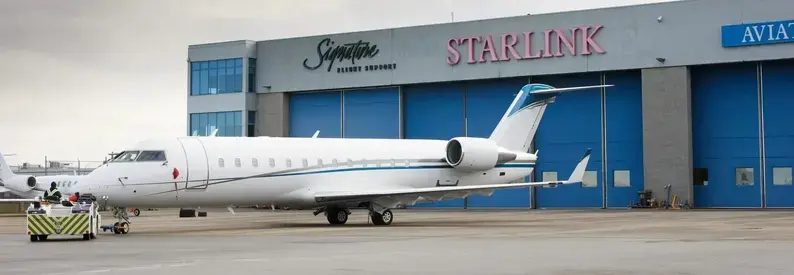Starlink In-Flight Connectivity Set to Reach 10,000 Aircraft by 2034

Elon Musk’s Starlink internet service is poised to connect over 10,000 aircraft by the end of 2034, according to a report published on May 7, 2025, by Valour Consultancy. The UK-based market intelligence firm highlighted how low-Earth orbit (LEO) satellites have “shaken up” the in-flight connectivity industry, challenging legacy systems and redefining expectations for performance and deployment speed. As airlines increasingly demand seamless broadband at altitude, Starlink’s rapidly expanding footprint underscores a major transformation in how passengers stay online while airborne.
Since late 2022, Starlink has inked deals to outfit more than 2,000 commercial jets with its next-generation IFC service, even though only about 100 of those aircraft have completed installation to date. Rapid antenna installation—completed in just eight to ten hours—has given Starlink a distinct advantage over traditional satellite providers, whose hardware and certification processes can stretch over weeks or months. Valour Consultancy senior analyst David Whelan notes that the accelerated rollout pace has helped Starlink secure early wins with carriers eager to upgrade aging onboard Wi-Fi systems.
Major airlines already using Starlink include United Airlines, Qatar Airways, WestJet and Air France, while SAS Scandinavian Airlines signed on in early 2025. Industry insiders expect Emirates to announce a Starlink partnership imminently, further cementing the operator’s position in the premium long-haul market. Each new customer adds momentum to Starlink’s growth trajectory, promising more reliable high-speed internet on some of the world’s busiest routes and strengthening the appeal of in-flight broadband as a differentiator for airlines.
Starlink’s network is also winning regulatory approvals at an unprecedented rate. By early 2025, the service had secured Supplemental Type Certificates (STCs) for the Boeing 737-800, Airbus A220 and Embraer E175 platforms. AirBaltic became the first airline to launch paid Starlink in-flight service on A220s in February 2025, demonstrating how quickly carriers can transition from contract signing to revenue-generating operations. Additional certifications for A320 family jets and other popular models are expected later this year, opening new avenues for rapid fleetwide integration.
Despite its rapid ascent, Starlink faces mounting competition. Traditional satellite operators like Intelsat and Panasonic Avionics are rolling out multi-orbit connectivity solutions that combine geostationary and LEO satellites to ensure uninterrupted coverage. Hughes Network Systems has also entered the fray with a major contract to equip Delta Air Lines’ fleet, signaling that airlines seeking redundancy or lower per-unit costs may turn to alternative providers. Valour Consultancy cautions that Starlink’s premium pricing may steer some carriers toward mixed-vendor strategies, particularly on routes with complex regulatory hurdles or sparse ground station support.
Looking ahead, Valour Consultancy projects that Starlink could capture 39 percent of the commercial aviation connectivity market by 2034, translating to service on over 7,000 airliners. The study also forecasts Starlink equipping more than 3,000 private jets by the same year, reflecting growing demand for high-performance internet among business travelers. Such penetration rates would firmly establish LEO satellites as the backbone of next-generation in-flight connectivity, relegating older systems to niche applications or low-cost short-haul segments.
As the industry approaches a tipping point, airlines must weigh the benefits of Starlink’s superior bandwidth and installation speed against the evolving multi-orbit landscape and cost pressures. For carriers aiming to offer passengers seamless streaming, virtual meetings and social media access at 35,000 feet, Starlink represents a compelling leap forward. Whether Starlink’s ambitious rollout ultimately reaches 10,000 aircraft by 2034 will depend on regulatory approvals, supply chain resilience and continued innovation in satellite and antenna technology.
Related News : https://airguide.info/?s=Starlink
